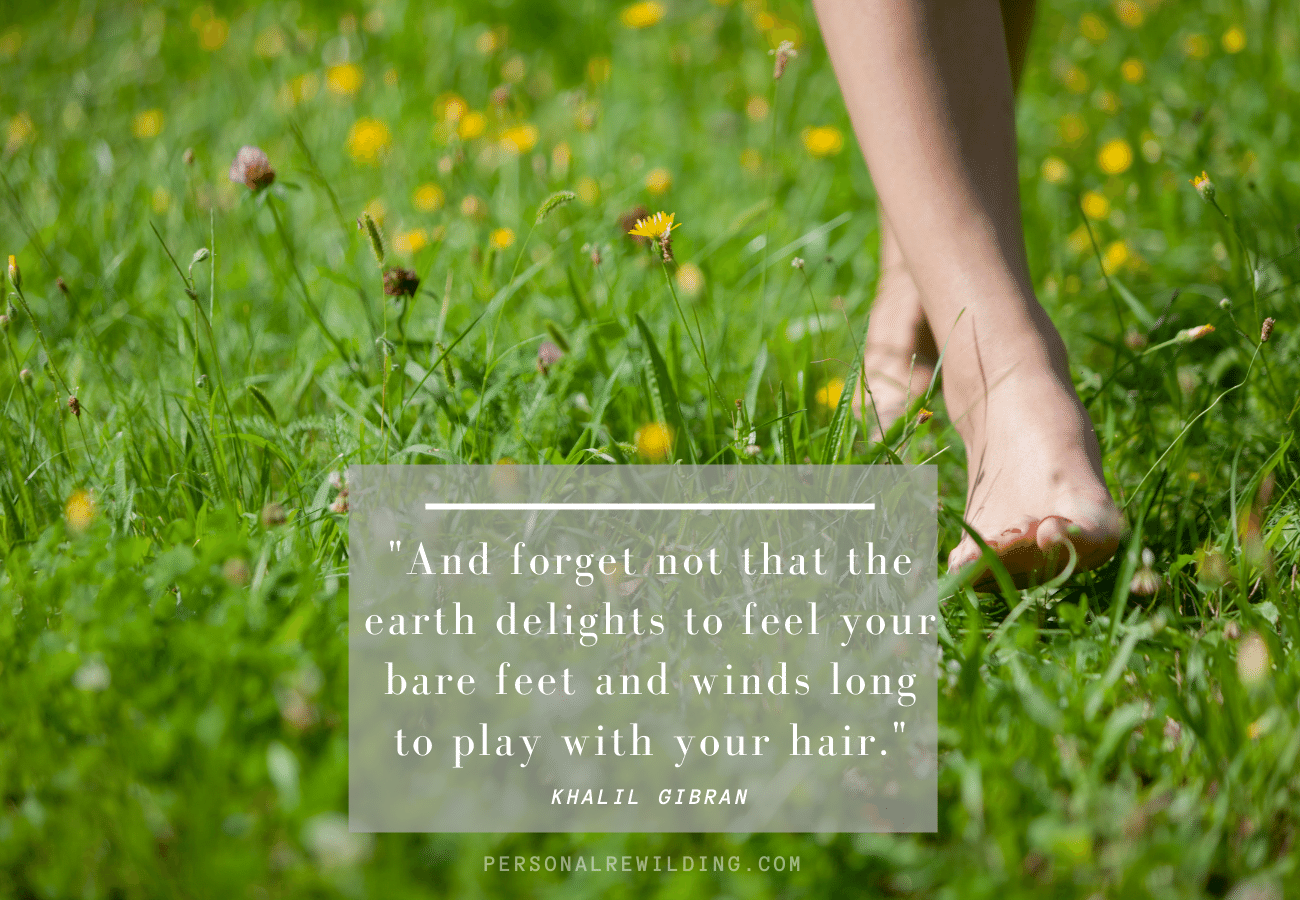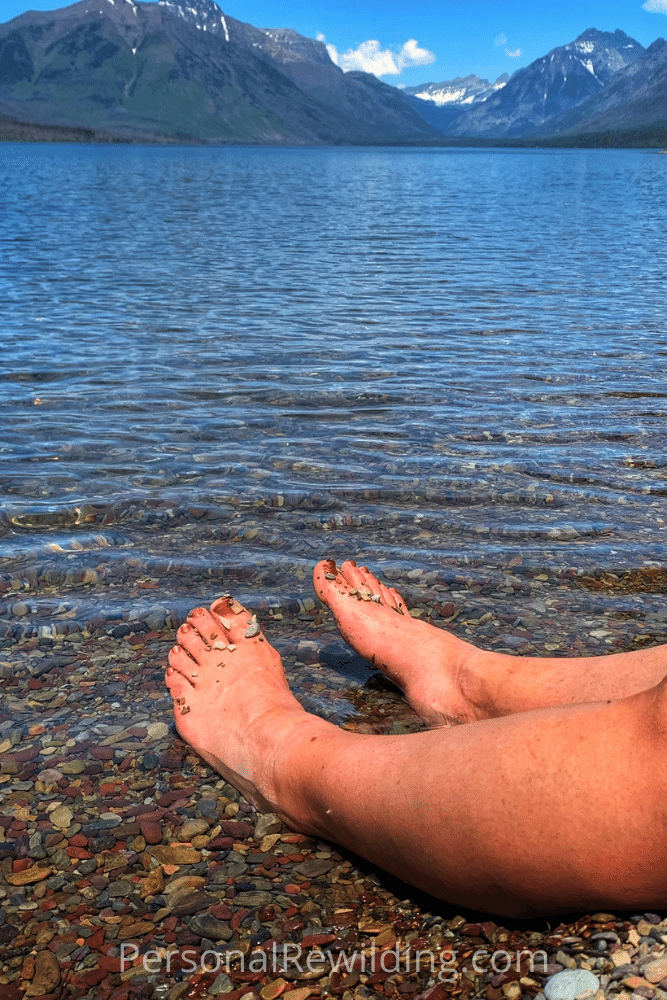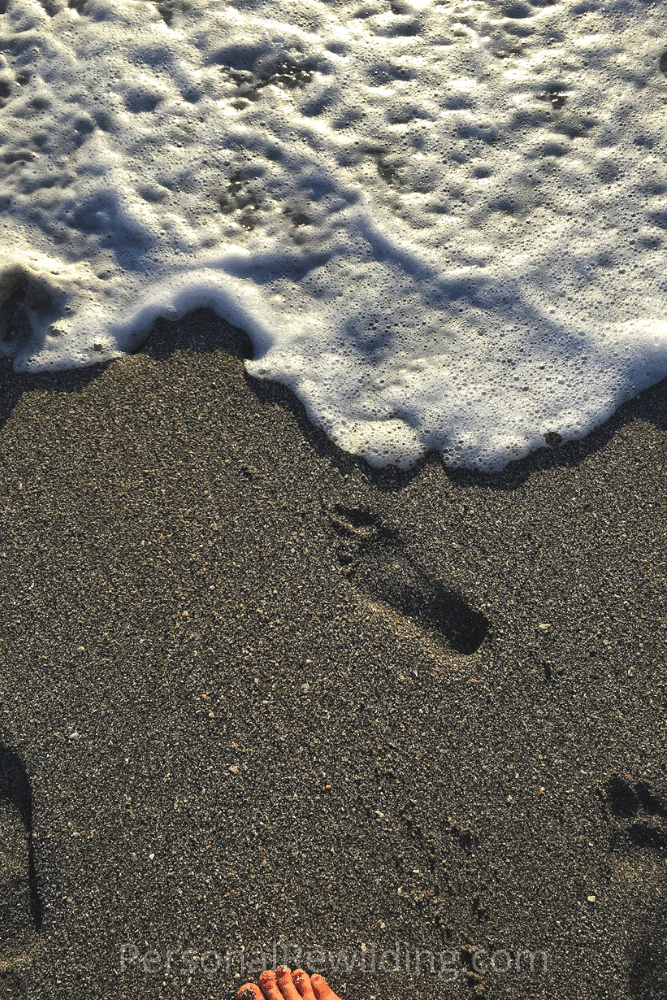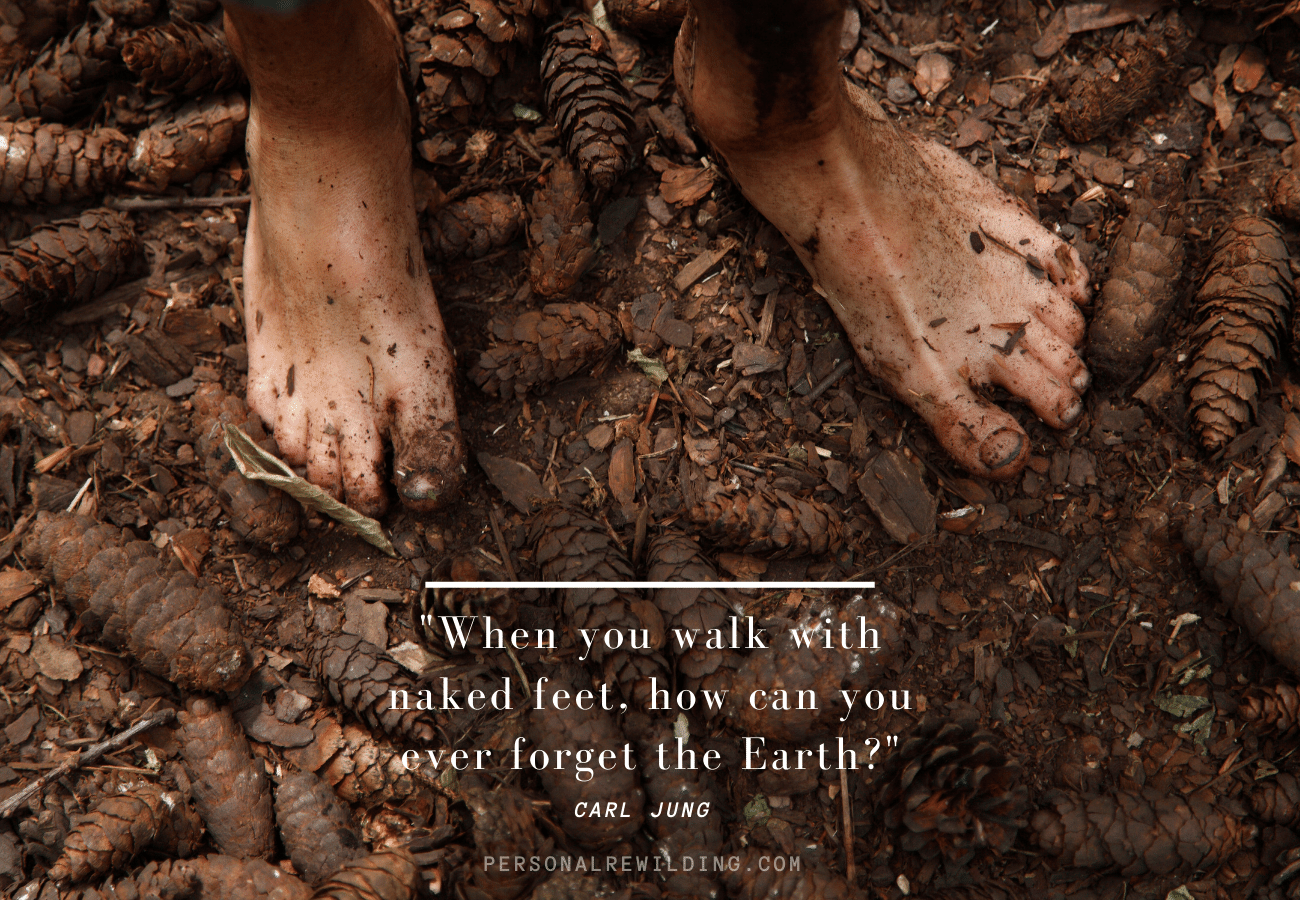- Home
- Walking in Nature
- Walking Barefoot
Walking Barefoot in Nature
Walking barefoot in nature is a wonderful way to connect with nature, ground yourself in the environment, and stimulate the tactile sensations of your body.
Who doesn’t remember, as a child, walking barefoot though the soft grass? Or walking down a beach across wet sand? Or feeling mud press up between the toes on a rainy day?
These are things most of us did as children, and then we somehow “grew out of them” as we transitioned into adulthood. Walking on the beach is perhaps the only place where adults still routinely walk barefoot. Few of us feel the earth beneath our bare feet with any regularity.
Our feet were made to contact the earth. Putting barriers between ourselves and nature is an action that has disassociated humans from the wider environment. Removing some of those barriers – on occasion! – can lead to a re-connection with the landscape and with ourselves.
Walking barefoot in nature takes us back to a simpler, more natural state. Learning to live simply and to recognize the natural sensations of the body and its affinity with the natural environment are at the heart of Personal Rewilding.
We recognize that walking barefoot in nature isn’t something you can do every moment. Different seasons, terrains, health constraints, and safety precautions mean that most of the time we are outdoors, we’re wearing shoes for protection and comfort. But most of the various benefits of walking barefoot in nature can be realized in as little as 10-15 minutes, several times a week.
Slip off your shoes. Take a stroll through the dewed grass in the morning. Dip your toes in the cold running water of a stream. Pluck a dandelion between your toes. To do each of these things is to shed some of our over-civilized instincts and the anxieties they carry.
"Dried mud flats, sun-warmed, have a delicious touch, cushioned and smooth; so has long grass at morning, hot in the sun, but still cool and wet when the foot sinks into it, like food melting to a new flavour in the mouth. And a flower caught by the stalk between the toes is a small enchantment."
-Nan Shepherd, The Living Mountain
Benefits of Walking Barefoot
Walking barefoot has many health benefits even beyond the normal benefits of walking in nature. For millenia, humans walked barefoot or shod themselves in thin layers as protection against the harsh ground. The foot is built for contact with the earth.
Stronger Feet and Legs = Less Pain
Constant use of shoes has weakened the muscles in our feet, which translates up into the legs and, eventually, our lower back. Many people with chronic back pain could find relief by walking barefoot more frequently.
Research has shown that people who walk barefoot tend to walk with a different stride than a person walking in shoes. Walking barefoot, a person walks with a shorter stride, stepping into the middle of the foot rather than onto the heel, and walks more lightly.
This natural gait minimizes the impact to be translated up through the legs. A 2019 study in Scientific American showed that up to three times more energy was transferred into the leg when walking in shoes vs walking barefoot. The repeated results of this additional shock could cause chronic joint pain, back pain, and arthritis.
Walking barefoot in nature utilizes and strengthens muscles in the foot and lower legs that are neglected in cushioned shoes. Strengthening these muscles can lead to better balance, improved posture, and stronger leg muscles, which in turn supports the hips and lower back.
Additionally, each foot has over 200,000 nerve endings. The sensations of walking barefoot have been shown to relieve anxiety, lower blood pressure, and improve posture. When you feel the ground you grow more aware of your body position and your posture. You’ll find you naturally stand straighter and activate your core.
Try it yourself. Walk outside barefoot into the cool grass. You’ll realize you hold yourself differently and stand straighter. It happens without even thinking about it.
Earthing
The earth is a conductor of free electrons. Encountering the earth with our bare skin – through our feet or through any other part of our body – conducts electrons through our bodies. These electrons act as antioxidants, neutralizing harmful free radicals in our bodies, reducing inflammation, and regulating our sleep and energy cycles.
Earthing is a holistic health practice that harnesses this natural antioxidant effect through regular and repetitive contact with the earth’s negative charge. You can learn more about Earthing and its potential benefits here.
“The surface of the earth is soft and impressible by the feet of men; and so with the paths which the mind travels.”
-Henry David Thoreau
Where to Walk Barefoot
Obviously, many places are off-limits when it comes to barefoot walking. City streets and sidewalks, many public spaces, and (for obvious reasons) dog parks are poor choices for barefoot walking. So are gravel roads (ouch!) and fields of clover or wildflowers (bees!).
But there are many great options for places to kick off your shoes and socks and press your feet to the soil.
- Your lawn
- A pebble beach
- Among fallen leaves
- In a stream or creek bed
- A mudpuddle
- Concrete after a rain
- In tall grass
- In freshly-plowed dirt
- On a wet sand beach
- On a dirt path
- On luxuriant moss
- In fresh snow
You don’t need to physically “walk” to gather many of the benefits of going barefoot. Consider reading outside and kick your shoes off while you’re doing it. Allow your toes to press into the grass while your mind is absorbed in a story.
Walking Barefoot: Safety Tips
Personal safety is a key piece to keep in mind when considering barefoot walking. Enjoying the benefits of walking barefoot means keeping yourself healthy and avoiding potential pitfalls or injuries.
Only walk where you can see potential hazards clearly. Do not walk barefoot where likely hazards exist – including broken glass, bottle caps, and other detritus; bees or other biting insects; thorn bushes or thorny undergrowth.
If you injure yourself while walking barefoot, get prompt first aid. Failure to treat injuries quickly can lead to infections.
Start small and do not plan to walk great distances barefoot. The benefits of walking barefoot in nature can be achieved through 10-15 minutes of casual walking, even sitting outdoors in a chair with your feet in the grass carries many of the same benefits.
The next time you go walking in nature, kick your shoes off for a few minutes. Press your feet into the soft dirt of an embankment or bathe them in the cool water of a running stream. You will find that even a few minutes of this can revitalize you, awaken your senses, and help you connect with nature.
“I felt a sensation of candour and amplitude, of the body and mind opened up, of thought diffusing at the body’s edges rather than ending at the skin.”
– Robert Macfarlane, The Old Ways






